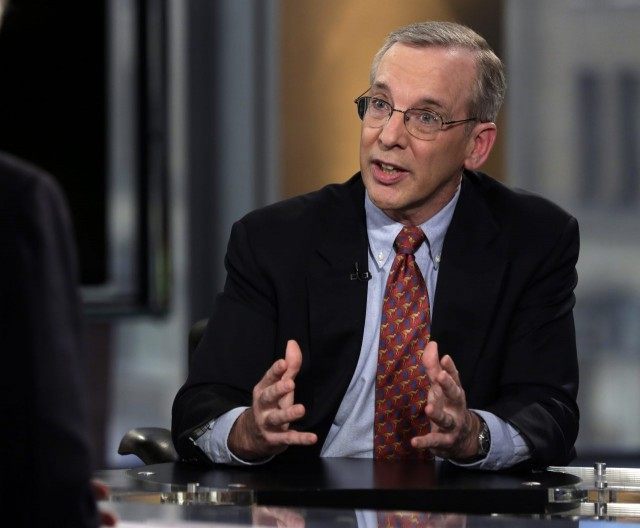WASHINGTON (AP) — It’s a question whose answer seems to be in constant flux: When will the Federal Reserve finally raise interest rates?
Two voting members of the Fed’s policy committee weighed in Friday with a similar view: That a rate hike remains likely by the end of 2015 but that any Fed decision will depend on how the economy fares between now and then.
William Dudley, president of the Fed’s New York regional bank, and Dennis Lockhart, president of the Atlanta Fed, said that despite pressures from abroad, they thought the economy would keep performing at a solid enough pace to justify a rate hike at one of the Fed’s final two meetings of the year. Still, Dudley and Lockhart both cautioned that they would closely monitor the economic data to determine whether and when to endorse a rate increase.
A third Fed official, Charles Evans, president of the Chicago Fed, also spoke Friday and delivered a more cautionary message: He urged the Fed to remain patient because inflation remains well below its 2 percent target.
“Before raising rates, I would like to have more confidence than I do today that inflation is indeed beginning to move higher,” Evans said in a speech in Milwaukee, urging an “extra-patient approach” to rate policy.
Evans is among the Fed’s “doves” — officials who worry more about threats from economic weakness than do “hawks,” who focus more on the risk that inflation could run too high.
The mixed messages delivered Friday won’t resolve the uncertainty that has seized investors over whether the Fed will start raising rates from record lows by year’s end. Dudley did signal that while a rate hike at the Oct. 27-28 meeting remains theoretically possible, any increase would more likely occur at the Dec. 15-16 meeting.
“Have we seen enough information between September and October to convince us to do in October what we didn’t do in September?” Dudley said. “That would be the question I would ask.”
Lockhart noted that the Fed will have much more economic data available in December to help make a decision. The data will include jobs reports for October and November, inflation data for September and October and the government’s first two estimates of economic growth in the July-September quarter.
Two more job reports may be critical in making the decision. The most recent employment report showed that employers cut back sharply on hiring in September and added fewer jobs in July and August than previous thought.
Dudley suggested that other reports on the economy painted a brighter picture.
“If you look at the U.S. economy right now, you see a pretty strong domestic economy,” he said. The trouble, he said, is that this strength is being offset somewhat by global weakness, including a slowdown in China, and a stronger U.S. dollar, which is hurting U.S. exports.
Lockhart also acknowledged recent weakness in economic data. He noted that these reports followed a turbulent August in which concerns about China’s slowdown sent stock prices plunging.
“While I have not changed my basic outlook, very recent data have not provided much confirmation that my narrative still holds,” Lockhart said in a New York speech to the annual meeting of the Society of American Business Editors and Writers. “I perceive a touch more downside risk today than I saw some weeks ago.”
Still, he said, “I continue to feel that cumulative progress is consistent with liftoff relatively soon.”
The Fed has kept its key rate at a record low near zero since 2008. Many had expected the first hike to occur in September. But minutes of that meeting released Thursday revealed concern that China’s slowdown could weaken the U.S. economy and that inflation could remain excessively low. The Fed voted 9-1 to keep rates unchanged. Lockhart, Dudley and Evans all voted with the majority.
The three officials are among five regional bank presidents with a vote this year on the panel of Fed bank presidents and board members that meets eight times a year to set interest rate policy.
A fourth regional bank president with a vote, John Williams, head of the San Francisco Fed, said in a speech Thursday that he also expects a rate hike this year. But he cautioned, “That view is not immutable and will respond to economic developments over time.”
Many economists say the weak jobs report for September makes a rate increase more uncertain. Some still foresee an increase in December, others not until next year.
When the Fed does start raising rates, something it hasn’t done in nine years, it will eventually mean higher rates for consumers and businesses. But Fed officials, including Chair Janet Yellen, have stressed that the rate increases will likely be very gradual, meaning that rates would still remain near historic lows for a while.

COMMENTS
Please let us know if you're having issues with commenting.